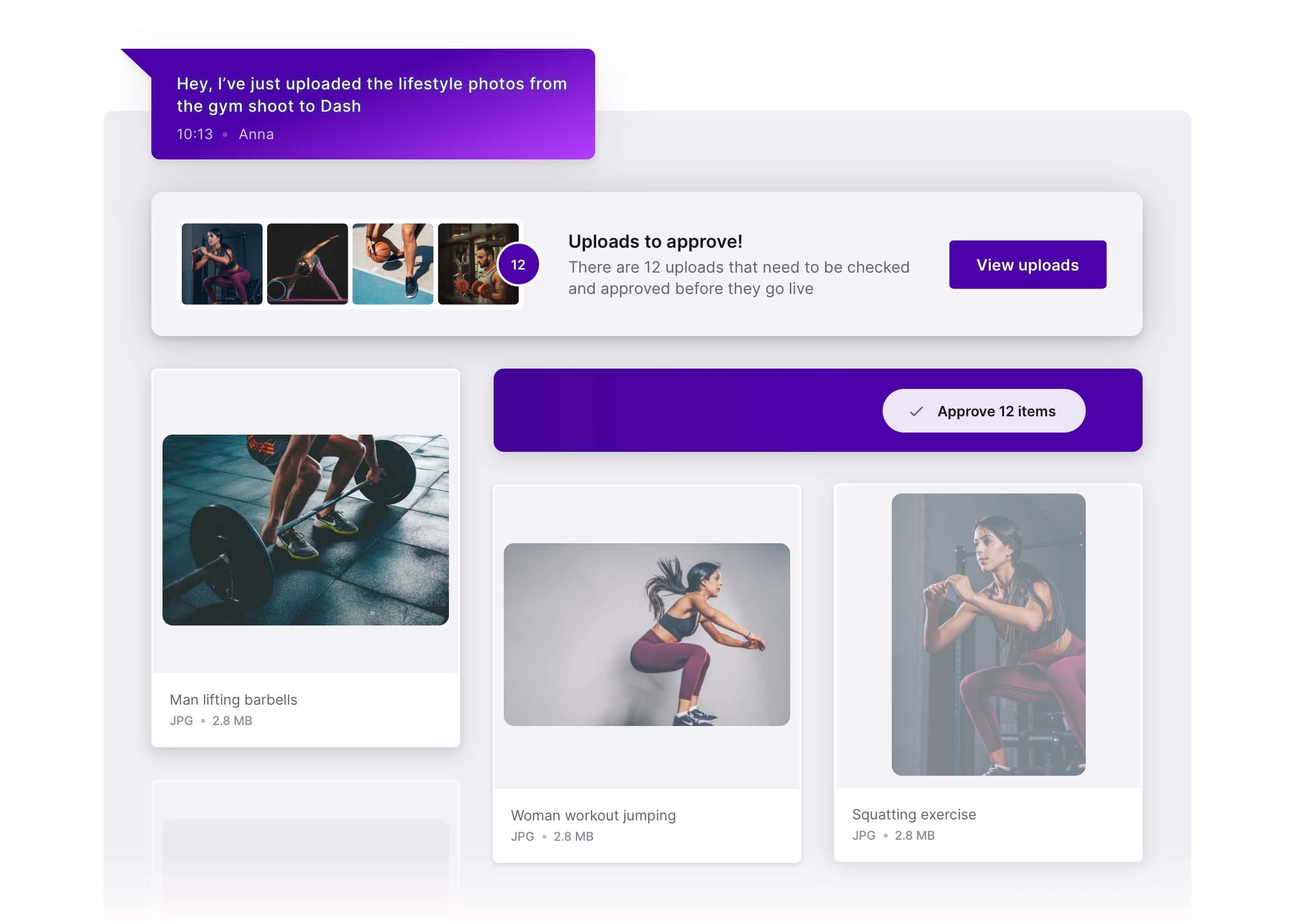
5 branding tools that’ll help you click with your audience (and yourself)
To click with your audience, you’ve got to know what makes them tick.
Seems obvious, right?
Thing is, to hit the mark you need to know yourself too. Which, according to our research of over 200 marketing decision-makers, is no easy feat. Worryingly, it revealed that almost half (46%) admitted they were not able to fully describe their company’s most up-to-date logo. Understandable, really, when only 42% could confidently say where their brand guidelines are saved.

But today’s brands can’t afford to get it wrong.
Scrutinised beneath the magnifying effect of social, they’re under enormous pressure to stand out.
And stand for something.
Recently, an Australian survey revealed that Woolworths was the country’s most trusted brand, while Amazon is distrusted; you can’t help but wonder what reputational damage was done by the world’s richest man, Jeff Bezo, thanking Amazon customers for funding his space flight.
In the midst of global warming and a global pandemic, it’s our corporate responsibility to do more than just sell; we should be marketing with empathy, creating value for our customers - and the wider world.
But it’s tough to do it alone.
With that in mind, here are 7 great branding tools to help you click your audience - and yourself.
#1. WhatFont - get out of my (type)face
Ask any designer or brand guardian who QAs their work and they’ll tell you, finding the right typeface isn’t easy.
Choosing a set of two or three fonts that matches your personality, are readable on all devices and feel distinct to your brand is a time-consuming task - even if you’ve got the skill sets in-house.
WhatFont is a free Chrome extension that makes this task a little easier. Just download this branding tool, refresh the webpage and hover over any font to find out what it is. Ideal for marketers who find a typeface they like but can’t identify it, or want to double-check their competitors to make sure their brand has a point of difference. Not only that, WhatFont displays a typeface’s style, size, weight and colour so developers can quickly identify if there are font inconsistencies on their own site. Handy.
#2. Dash - get your digital ducks in a row
With multiple versions of brand guidelines floating around and assets saved left-right-and centre - from shared drives to personal desktops - things can quickly become inconsistent. But it’s hard to give audiences a true account of who you are when your house isn’t in order.
Designed for growing SMEs, Dash gives you more time for the good stuff - like getting creative. And as it’s integrated with Adobe Cloud and Microsoft Office, it makes this bit easy-on-the admin too. Centralising and tagging everything so your assets are intuitive to find, this brand library can be accessed from anywhere. It uses the power of AI to help you search via people, text, locations or objects. So just set up your permissions and wave goodbye to endless digs through drives and the horrors of lengthy zip transfers.

Image: You can easily approve user uploads in Dash
Because your brand might seem cool, calm and collected on the outside to customers. But now you can feel that way on the inside, too. And breathe.
#3. Brandwatch - getting to know you...
It’s one thing to know yourself, but what does your brand mean to customers? That can be something else entirely.
Brandwatch is a customer intelligence platform that allows you to find meaning in the conversations that are happening online. It allows you to spot trends that are popping up on social and, more importantly, the sentiment towards your brand. Worst case scenario, you can respond quickly and confidently to a harmful tweet; on the other hand, you might find something that’s working well and want to double down on it.
Either way, as far as branding tools go, it’s one of the smartest on the market.

Never miss an update from us.
We're all about helping to make your workday more inspiring and productive.
#4. HARO - get by with a little help (from my friends)
One thing’s for certain: journalists are always going to be looking for the next scoop. And you know what? The best brands have a tale to tell, too.
HARO - or Help A Report Out - is an online resource that connects journos with brands or individuals who have a story to share, Sign up as a ‘source’ and see if there are writers looking for comments from experts - that’s you. Alternatively, you might want to pitch an angle to see if there are any bites.
Either way, all the leading media outlets use HARO - from Mashable to Time - so it can be a powerful PR tool for boosting brand awareness.
#5. Proof - get what they got
As marketers, we’re already on the backfoot with campaigns.
You can’t blame anybody for tuning out when they’re being bombarded with anything between 6,000 - 10,000 ads per day.
That’s why social proof is more important than ever; it’s the most trustworthy and effective marketing you can do.
Well, Proof goes beyond your tried-and-tested testimonial. The software is designed to build trust on-site in real-time, telling visitors what other customers are doing and reassuring them in the process. It can create urgency with webinar sign-ups and content downloads or give people a sense of scarcity with exclusive products or limited event spaces.
Essentially, it means that if you’ve got a great product, you don’t need to oversell it online; just let your most valued customers do that for you, instead. Perfect.
And the best of the rest...
OK, with only 5 out of over 8,000 MarTech solutions highlighted here, this is by no means an exhaustive list. With that in mind, here are some great branding tools we may have talked about before but are well-worth mentioning again. From content marketing to market research, these are welcome additions to any stack...
Content ideation - BuzzSumo
Getting tangled up with Google Trends and running low on inspiration? BuzzSumo helps you understand what content is working online and gives you a leg-up through that tricky ideation phase.
User-friendly design - Canva
Unless you’re a pro, design can be pretty intimidating. What’s more, if you’re an SME or startup, you might not have a Creative Cloud connoisseur on your team. Well, with plenty of free templates and intuitive controls, Canva makes graphic design accessible to anyone. Check out our handy blog post that gives you some top tips for getting started.
Market research - Survey Monkey
Still the number one questionnaire solution for a reason, Survey Monkey is free to start and requires no coding. Create complex questionnaires and then measure the results with inbuilt metrics. Perfect for creating original content and PR.
Copy proof - Grammarly
Download and switch on this nifty Chrome extension and you’ll have a free copy assistant at your disposal. From separating your theirs and there’s to more complex readability recommendations, get some reassurance that your content’s always consistent and clicking with readers.
On-page optimisation - Yoast SEO
An essential tool if you’re on WordPress, Yoast SEO makes optimisation dead-easy. The traffic light system ensures keywords are in your titles and H tags, so you’ll be seen by the spiders (and the humans).
Again, just the tip of the iceberg really when it comes to branding tools. So, if you’re looking for something else but not quite sure what it is, we’ve highlighted more marketing tools you might not have heard of here.

